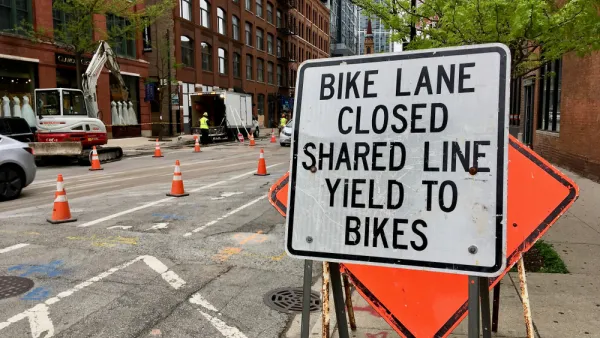Chicago has its first “comprehensive plan” since the 1960s, but without a land use map, the “We Will Chicago” plan is devoted more to laying out the issues and challenges facing the city than setting new policies.

The Chicago Plan Commission unanimously approved the “We Will Chicago” plan on February 16, marking the city’s first comprehensive planning effort since the 1960s. The document is not as robust as traditional comprehensive plans, however, and is described by the Chicago Plan Commission as a “framework plan.”
David Roeder broke the news of the new plan for the Chicago Sun-Times, describing some of the features of the new plan while also noting the document’s limitations. So, for example, the plan “follows overarching themes of equity and resilience and seeks to address discriminatory practices of the past that harmed largely minority neighborhoods and pushed some middle-class residents out of Chicago.”
“The plan highlights data showing the impact of redlining in mortgage loans, the differences in wealth and health across neighborhoods and the preponderance of pollution in poor areas, among other measurements that distinguish the haves from the have-nots,” adds Roeder.
In all, the plan speaks to eight “pillars”: 1) arts and culture; 2) civic and community engagement; 3) economic development; 4) environment, climate and energy; 5) housing and neighborhoods; 6) lifelong learning; 7) public health and safety; and 8) transportation and infrastructure. A land use map, found in the typical comprehensive plan, is not included.
Chicago Mayor Lori Lightfoot championed the plan, according to Roeder, and the commission adopts the document during a hotly contested mayoral election. Members of the Chicago Plan Commission caution that the framework will leave questions of specific policymaking and implementation to future administrations.
FULL STORY: ‘We Will Chicago’ plan adopted to guide city’s next decade

National Parks Layoffs Will Cause Communities to Lose Billions
Thousands of essential park workers were laid off this week, just before the busy spring break season.

Retro-silient?: America’s First “Eco-burb,” The Woodlands Turns 50
A master-planned community north of Houston offers lessons on green infrastructure and resilient design, but falls short of its founder’s lofty affordability and walkability goals.

Delivering for America Plan Will Downgrade Mail Service in at Least 49.5 Percent of Zip Codes
Republican and Democrat lawmakers criticize the plan for its disproportionate negative impact on rural communities.

Test News Post 1
This is a summary

Test News Headline 46
Test for the image on the front page.

Balancing Bombs and Butterflies: How the National Guard Protects a Rare Species
The National Guard at Fort Indiantown Gap uses GIS technology and land management strategies to balance military training with conservation efforts, ensuring the survival of the rare eastern regal fritillary butterfly.
Urban Design for Planners 1: Software Tools
This six-course series explores essential urban design concepts using open source software and equips planners with the tools they need to participate fully in the urban design process.
Planning for Universal Design
Learn the tools for implementing Universal Design in planning regulations.
EMC Planning Group, Inc.
Planetizen
Planetizen
Mpact (formerly Rail~Volution)
Great Falls Development Authority, Inc.
HUDs Office of Policy Development and Research
NYU Wagner Graduate School of Public Service





























